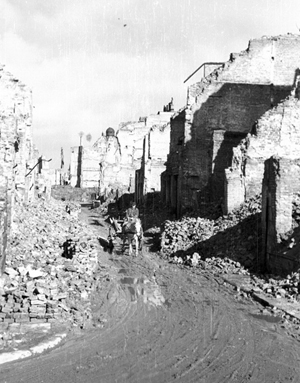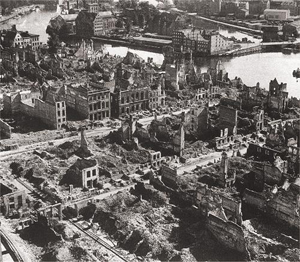FHM nomination
January 14, 2009

Castle Run. Now that’s a surprize.
Sometimes you do what you gotta do. Check out how many pastel games are actually in there 8)
[voting closed. you can check the results here.]

Happy New Year everybody. Once again thank You for your undying support. For this upcoming year I wish you all cf3, sub6 and dmt3. On a side note – that picture above is kind of ubergeek. Sure, some fireworks, nothing fancy on this occasion, but they’re over the first 10Gnomes location!! Woot! Pew pew pew!!!
play | watch video from location
This is it. Game over. I had a real problem finding another decent location worth showing. But then I remembered – the tank! It’s a landmark of my district and it looks like a gnome hideout allright. So we end this series on a historical note, with last months episode aboud war remains and now this one – it’s a WW2 reminiscence once again.
~~~~
I can’t believe that entire year just passed by. It feels like I had this idea for gnome-finding game just few days ago and making pictures for the first one just yesterday. Yet, it was in january. Now, 12 games, 1000 pictures, 12 trolls and 141 gnomes later – here we are.
I really enjoyed making those games and watching the series evolve – if you remember, there were some birds to find in first games, one scary hand,and then in the middle of year the trolls stepped in and stayed with us for good.
Thank You for playing this series, for commenting and staying with the gnomes till the end.
the gnome herder
p.s. – wait, 141 gnomes in 12 10-gnome games? Go figure ;)
The green alien is back! Now going to explore the rings of Jupiter. Seems like those green gems that are in every game since the Mars adventure are kindof important to those alien guys. So go get them.
the holiday season just came out of nowhere and kicked me in the face shouting – I’m here!! Time flies too quickly for me these days (years). Here’s a little game and it doesn’t really involve Christmas – as not all of you celebrate it. Help little santa find new year because that damn kid got lost again. Version 2009. Allrighty then, back to Christmas madness…
play | watch video from location
This month’s episode has a little substory as well, but it’s not about me or what I did, but about the location itself. So there’s this street. Mariacka Street. After our city was destroyed during World War 2, there was not much left of it and its structure. Ruins mostly. So what they did was collecting all undamaged (or lightly damaged) ornament entrances to the now non-existent houses of the city centre and put them all on one street so it would look like before the war. That’s the place. One of the must-sees in our city on every tourist’s route. That’s why I had to wait until late November and be there early in the morning to catch that place human-less. Kind of a graveyard you say? I can’t say that I disapprove.
That’s how the city looked in 1945:


COVERT FRONT EPISODE 3: NIGHT IN ZÜRICH MEGOLDÁS
FONTOS: Nagyon szívesen írok megoldásokat, de nem azért teszem, hogy más egyetlen pillantás alatt átmásolja a saját honlapjára, pontos forrásmegjelölés (http://sickestreality.blogspot.com/) nélkül. Kérlek, te se tedd, köszi!
1. Menj balra és vedd el a fazontól az újságot. Nézd meg és vedd ki belőle a pénztárcát és a papírokat. Menj jobbra és menj ki az ajtón.
2. Menj balra és menj be a jobb oldali ajtón. A papírjaid a bécsi járatot említik, így nézd meg a bal falon a menetrendet és a Bécshez tartozó időpontot: 23:40.
3. A jobb oldali ablaknál vedd meg a bécsi jegyet, vagyis a középsőt (Buy gomb).
4. Menj hátra, majd jobbra kettőt, be az ajtón, most a váróban vagy. Menj innen még kettőt jobbra. A papírjaid alján szerepel, hogy CII, vagyis keresd meg a 102-es megőrzőt (legfelül középen). Írd be a billentyűzeten a bécsi vonat indulását: 2340 és nyomd meg a gombot. Vegyél fel mindent, amit találsz.
5. Menj vissza oda, ahol az előbb a jegyet vetted és a bal oldali ablaknál vegyél egy svájcibicskát és egy képeslapot.
6. Lépj hátra és menj be a bal ajtón, majd menj mindig balra, amíg be nem érsz a vécébe. Itt nyisd ki a jobb ajtót és nézz felfelé. Szedd le a bicskával a csavarokat az ablakról és menj ki.
7. Menj be a szemben lévő házba és beszélgess a fazonnal. Vedd meg a 14-es szoba kulcsát.
8. Menj az emeletre és menj balra, majd nyisd ki az ajtót a kulccsal. Az ágyon találsz egy könyvet, benne pedig egy papírt.
9. Menj a szekrény mögött a telefonhoz, vedd fel a kagylót és tedd le jobbra. Nézd meg a papírjaidat, szerepel rajtuk egy szám. Tárcsázd ezt a telefonon.
10. Nyisd ki a szekrényt és menj át rajta a másik szobába. A földön a dobozban egy kulcsot találsz, az asztal jobb fiókjában pedig egy apró kulcsot.
11. Fordulj jobbra kettőt. A falon van egy kapcsoló, tedd rajta a felső lyukba a nagy kulcsot, az alsóba a kicsit és fordítsd el az alsót, majd a felsőt.
12. Menj balra és nézd meg az asztalon a nagy barna szerkezetet. Az egyik papírodon szerepel, hogy te vagy az M-24-7-69-es ügynök. Állítsd be a szerkezeten ezt, majd nyomd meg a gép alsó gombját és kapsz egy papírt.
13. Fordulj jobbra, menj vissza a szobába, majd menj ki az épületből az utcára és menj jobbra.
14. A bal oldalon van egy kisebb ajtó a falban, nézd meg és törd be az ablakát az újsággal. Nyúlj be a lyukon, majd menj be.
15. Odabent menj jobbra, majd be a szemközti ajtón. Az előtted lévő korláton van egy zár, nyisd ki, majd nézd meg odabent az asztalt. A legutóbbi papírod alsó részén találsz egy ötjegyű számot, pötyögd be ezt a szerkezeten. Nyomd meg a gombot és kapsz egy papírt. A fiókban találsz egy kulcsot.
16. Menj ki, majd menj jobbra a folyosón. Menj egyenesen és be a középső bejáraton. Nyisd ki a zárat a kulccsal és menj be.
17. A papírod szerint a könyv, amit keresel, Newton életrajza, így keresd meg az N betűs szekciót (a bal oldalon középtájon). Húzd ki az Ne fiókot és vedd fel a kártyát.
18. Menj ki ebből a helyiségből és menj be a bal bejáraton. Nyisd ki itt is a korlát zárját, majd dugd a kártyát a szerkezetbe és nyomd meg a gombot. Vedd fel a barna könyvet a szerkezet jobb feléből. Lapozz bele és találsz egy fotót.
19. Menj ki és menj be a jobb ajtón. A középen lévő szerkezeten válaszd ki a zürichi újságot, vagyis nyomd meg a harmadik gombot. Leereszkedik egy csomó újság, válaszd ki közülük az egyetlent, ami választható.
20. Nézd meg az asztalon az újságot, benne a jobb fotót és kattints a táskára rajta. Menj ki a helyiségből és kattints a jelre a padlón.
21. Beszélgess az elfogóddal. Utána fordulj jobbra és nézd meg az ágy jobb végét. Szedd le a rozsdás vasat a rácsról. Közben kapsz egy papírt, menj az ablakhoz és vedd fel.
22. Menj vissza az ágy végéhez és a vasaddal szedd le a másikat is innen. Nézd meg az ágy másik végét és innen is szedd le a vasakat.
23. Fordulj balra az üres falhoz. Piros repedéseket látsz rajta, dugd be ezekbe a vasakat egyenként. A jobb felső sarokban még két repedést találsz (az egyiket az ajtó ívénél), dugd be ide a maradék két vasat. Kattints még feljebb, így felmászol.
24. Ha vége a jelenetnek, menj a házhoz, nézd meg szemből és mássz fel a jobb oldalán. Odabent húzd meg a két kart, majd gyere vissza.
25. Menj a repülőhöz és vedd ki a kerekei elől az ékeket. Mássz be a pilótafülkébe és a jobb alsó sarokban húzd jobbra a gombot.
26. A repülő közepénél van egy propeller, indítsd be, majd szállj vissza a pilótafülkébe és húzd meg a botkormányt.
author: Sickestreality
COVERT FRONT EPISODE 2: STATION ON THE HORIZON MEGOLDÁS
FONTOS: Nagyon szívesen írok megoldásokat, de nem azért teszem, hogy más egyetlen pillantás alatt átmásolja a saját honlapjára, pontos forrásmegjelölés (http://sickestreality.blogspot.com/) nélkül. Kérlek, te se tedd, köszi!
1. Kattints a gyufáddal a sötétbe. Előfordulhat, hogy majd elalszik a gyufa, ekkor csak újra meg kell gyújtani, mint most.
2. Menj egyenesen ötöt. Egy téglafalat látsz, amiből kiáll három tégla. Kattints ezekre. Menj balra, vedd fel a szerkezet tetejéről a ellenállást és húzd le a szerkezeten a kis gombot.
3. Menj vissza és a falnál most menj jobbra. Menj be balra a bejáraton, majd jobbra. Menj végig és a földön találni fogsz egy ellenállást.
4. Menj vissza a lámpás elágazásig és itt menj balra. Menj végig és húzd meg a falon a kapcsolót.
5. Menj hátra egészen addig, amíg meg nem látsz egy piros falat egy nagy lyukkal. Menj be rajta, majd egyenesen az elágazásig. Menj be a bal lyukba, a végén találsz egy biztosítékot.
6. Menj vissza és menj be a jobb oldali lyukba, ennek a végén a földön filmszalagot találsz.
7. Menj vissza a csatornaelágazáshoz és fordulj jobbra. Menj be az ajtón, majd tovább egyenesen, amíg egy négy ajtóval rendelkező terembe nem érsz.
8. Menj be az első ajtón jobbra. A szekrényen egy vezetéket találsz. Menj be a második ajtón jobbra, a jobb oldali asztalon egy piros drótot találsz.
9. Menj be az első bal ajtón és a jobb oldali dobozban találsz egy csavarhúzót.
10. Nézd meg ugyanebben a szobában a jobb felső sarokban lévő dobozt a falon és szedd le a fedőlapját a csavarhúzóval. Tedd az alsó részébe az ellenállásokat és a piros drótot, a bal oldali részébe a biztosítékot, majd húzd meg rajta a kart.
11. Menj be a túlsó bal ajtón és nézd meg a nagy szürke szerkezetet az asztalon. Csavarozd le róla a fedőlapot és dugd be ide a vezetéket. Ha megjelenik a levél, kattints a Send gombra.
12. Kattints a bal sarokban lévő szerkezeten a villogó gomb melletti gombra és nézd meg a papírt. Jegyezd meg a jelszót.
13. Menj vissza a terembe és át a szemben lévő ajtón. A jobb falon van egy billentyűzet, ide kell beírnod az előbb látott kódot. Tanácsos először lejegyezni, hogy melyik gomb melyik a billentyűzeten, mert össze vannak keverve. (Az első sor gombjai: 80596, az alsó: 342I7.) Nyomd meg az alsó gombot és menj be jobbra. Az alsó polc jobb felén filmszalagot találsz.
14. Menj be balra. Nyomd meg a zöld gombot a bal sarokban lévő szerkezeten és vedd fel a filmszalagot. Tedd a hármas számú filmszalagot a jobb oldalon lévő vetítőgépbe és nézd meg. Az egyik jelenetben látni fogod a két ajtó között a falon, hogyan kell a körökben állnia a mutatóknak, jegyezd meg. Vedd fel a gépből a filmet újra és menj ki.
15. Állítsd be a köröket a film alapján: az elsőnél a sötét rész legyen a jobb alsó részen, a másodiknál álljon balra, a harmadiknál a jobb felső irányba, a negyediknél a bal felső irányba.
16. Menj hátra egészen addig, amíg a piros csatornák elágazásához nem érsz. Menj be a jobb oldali csatornán, majd a végén fordulj jobbra és szállj be a liftbe. Fordulj jobbra és nyomd meg a gombot.
17. A jelenet után megérkezik hozzád egy autó. Adj be az ablakán mindent, ami nálad van és vedd fel a kártyát. Kattints a kártyára.
author: Sickestreality
COVERT FRONT EPISODE 1: ALL QUIET ON THE COVERT FRONT MEGOLDÁS
FONTOS: Nagyon szívesen írok megoldásokat, de nem azért teszem, hogy más egyetlen pillantás alatt átmásolja a saját honlapjára, pontos forrásmegjelölés (http://sickestreality.blogspot.com/) nélkül. Kérlek, te se tedd, köszi!
1. Menj jobbra és a földön a növények alatt találsz egy csövet, a ládában pedig egy ollót.
2. Menj vissza, majd balra. Itt a növények lombjában van egy kis fekete lyuk, nézd meg és vágd el a vezetékeket az ollóval.
3. Menj vissza az ajtóhoz és menj be. Nézd meg a nő képét a falon és figyeld meg az órát a képen: 2:35-öt mutat.
4. Menj be a bal első ajtón és a kandallóban, a rács alatt gyufát találsz, a középső fiókban pedig egy jégvágót.
5. Menj jobbra és állítsd be az órán a képen látott időpontot. Ha megvan, kapsz egy apró kulcsot.
6. Menj vissza a konyhába és menj be balra a kandalló mellett a lyukon. Menj be az ajtón és kapcsold fel a villanyt a fal jobb szélén lévő kapcsolóval. Dugd a csövet az ajtónál lévő szerkezetbe.
7. Menj vissza a folyosóra és nézd meg a lépcső alatti ajtót. Nyisd ki a lakatot a jégvágóval és odabent vedd fel a feszítővasat.
8. Menj ki a házból újra és menj balra. Nézd meg az udvar bal sarkát és a feszítővassal szedd fel a rácsot. Nézz be a lyukba és tekerd meg a kereket.
9. Menj vissza a konyhán át a pincébe és húzd meg a kart az ajtó melletti szerkezeten. Vedd fel a kulcsot.
10. Menj ki a folyosóra és fel az emeletre. Menj be balra az első ajtón és vedd fel az éjjeliszekrényről a könyvet.
11. Nyisd ki a kulccsal a jobb oldali ajtót és menj be. Tedd a könyvet a helyére az alsó polcon. Most ki kell húznod két olyan könyvet, amin birodalmi sas van: az egyik a legfelső polcon a kis tömzsi barna könyv középen, a másik a harmadik polc legelején a világosszürke könyv.
12. Ha megvan, be tudsz menni jobbra. A bal oldaladon van egy asztal, vedd fel róla a papírokat. A szoba jobb sarkában egy oszlopon zöld gömbök vannak, vedd fel ezeket is. Menj a bal sarokban a szekrényhez és nyisd ki a tetejét a kis kulccsal. Vedd fel a gyűrűt.
13. Menj le a földszintre és menj a folyosó végére. A kép mellett balról a falon van egy kis foglalat, tedd oda a gyűrűt.
14. Menj be, mássz le és gyújtsd meg a lámpát a gyufáddal. A fal mellett a földön középen találsz egy biztosítékot.
15. Menj jobbra kettőt és tedd a biztosítékot a gépre a másik kettő mellé. Húzd meg a bal oldalán a gombot.
16. Menj jobbra és a feszítővassal feszítsd fel a rácsokat. Menj be, majd balra és kattints a sötétbe a gyufáddal.
author: Sickestreality